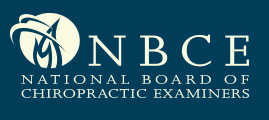Evidence-Based Practice and Chiropractic Care
SOURCE: J Evid Based Comp Altern Med. 2012 (Dec 28); 18 (1): 75-79
Ron LeFebvre, MA, DC, David Peterson, DC, and Mitchell Haas, MA, DC
University of Western States,
Portland, OR, USA.
Evidence-based practice has had a growing impact on chiropractic education and the delivery of chiropractic care. For evidence-based practice to penetrate and transform a profession, the penetration must occur at 2 levels. One level is the degree to which individual practitioners possess the willingness and basic skills to search and assess the literature. Chiropractic education received a significant boost in this realm in 2005 when the National Center for Complementary and Alternative Medicine awarded 4 chiropractic institutions R25 education grants to strengthen their research/evidence-based practice curricula. The second level relates to whether the therapeutic interventions commonly employed by a particular health care discipline are supported by clinical research. A growing body of randomized controlled trials provides evidence of the effectiveness and safety of manual therapies.
Introduction
The use of complementary and alternative medicine has increased dramatically during the past several decades. [1, 2] Estimates based on the 2002 National Health Interview Survey reveal that 62.1% of US adults used complementary and alternative medicine therapies during the previous year. [3] Chiropractic is the largest complementary and alternative medicine profession in the United States, with approximately 70 000 members, [4] and chiropractic services account for the greatest number of complementary and alternative medicine visits. [1] In 2002, approximately 7.4% of Americans consulted a chiropractor for treatment. [2] Chiropractic is a well-established part of the health care delivery system, included under Medicare and Medicaid laws, with worker’s compensation coverage in all 50 states. Insurance coverage for chiropractic is also quite extensive. Approximately 50% of health maintenance organizations and 75% of private health insurance plans cover chiropractic care.
You may also enjoy our:
Over the past 10 to 15 years, evidence-based practice has had increasing influence on the chiropractic profession. [5] A number of events and trends have converged to account for this phenomenon. Starting in the 1990s, a growing body of clinical research has offered support for the application of manual therapy for various musculoskeletal conditions, particularly low back pain. Consequently, manipulation has been included as an effective care option in a number of national and international guidelines on low back pain. [6, 7] Additional research in related fields such as orthopedic assessment of the spine and extremities, exercise therapy, and biomechanics of the adult spine has also affected the profession. As outcomes research has steadily increased, it has become more common for individual chiropractors to use evidence-based outcome measures such as validated questionnaires to measure activity limitations. In a cross-discipline study, chiropractors (along with physical therapists) were more likely than general medical practitioners to use Roland Morris or Oswestry Disability Questionnaires in assessing low back pain. [8]
Read the rest of this Full Text article now!






Leave A Comment